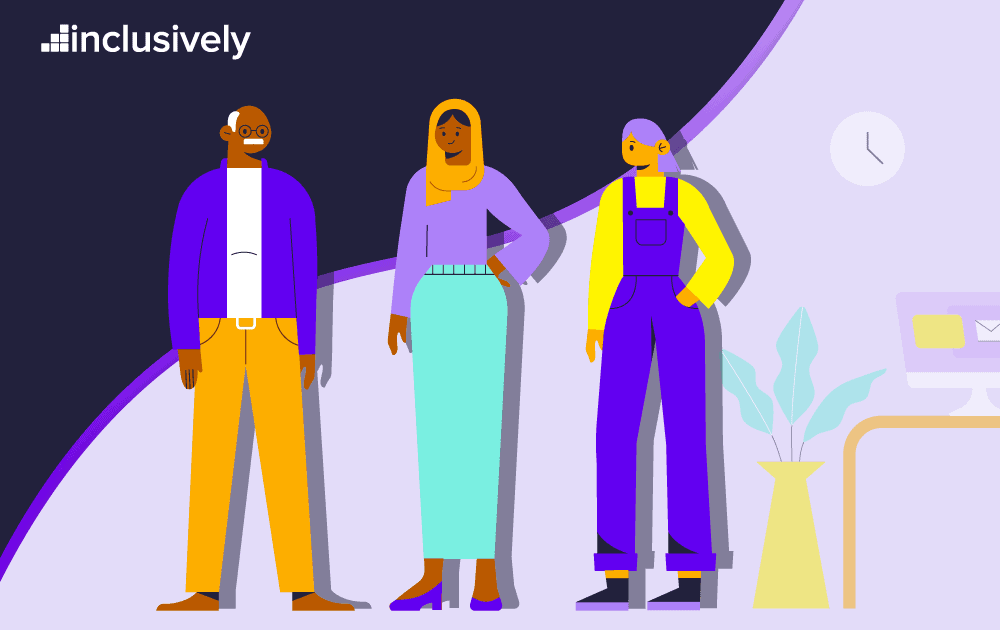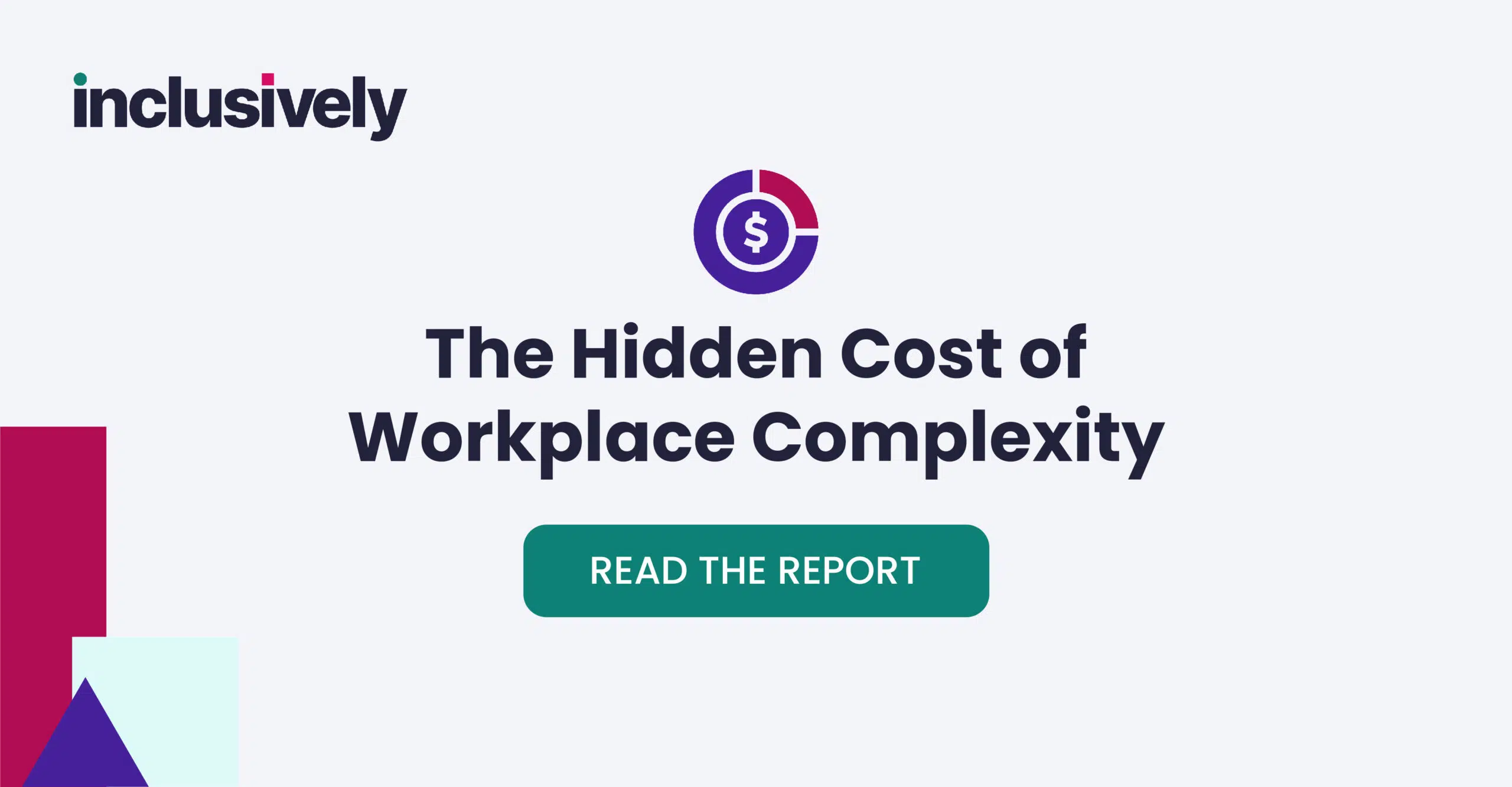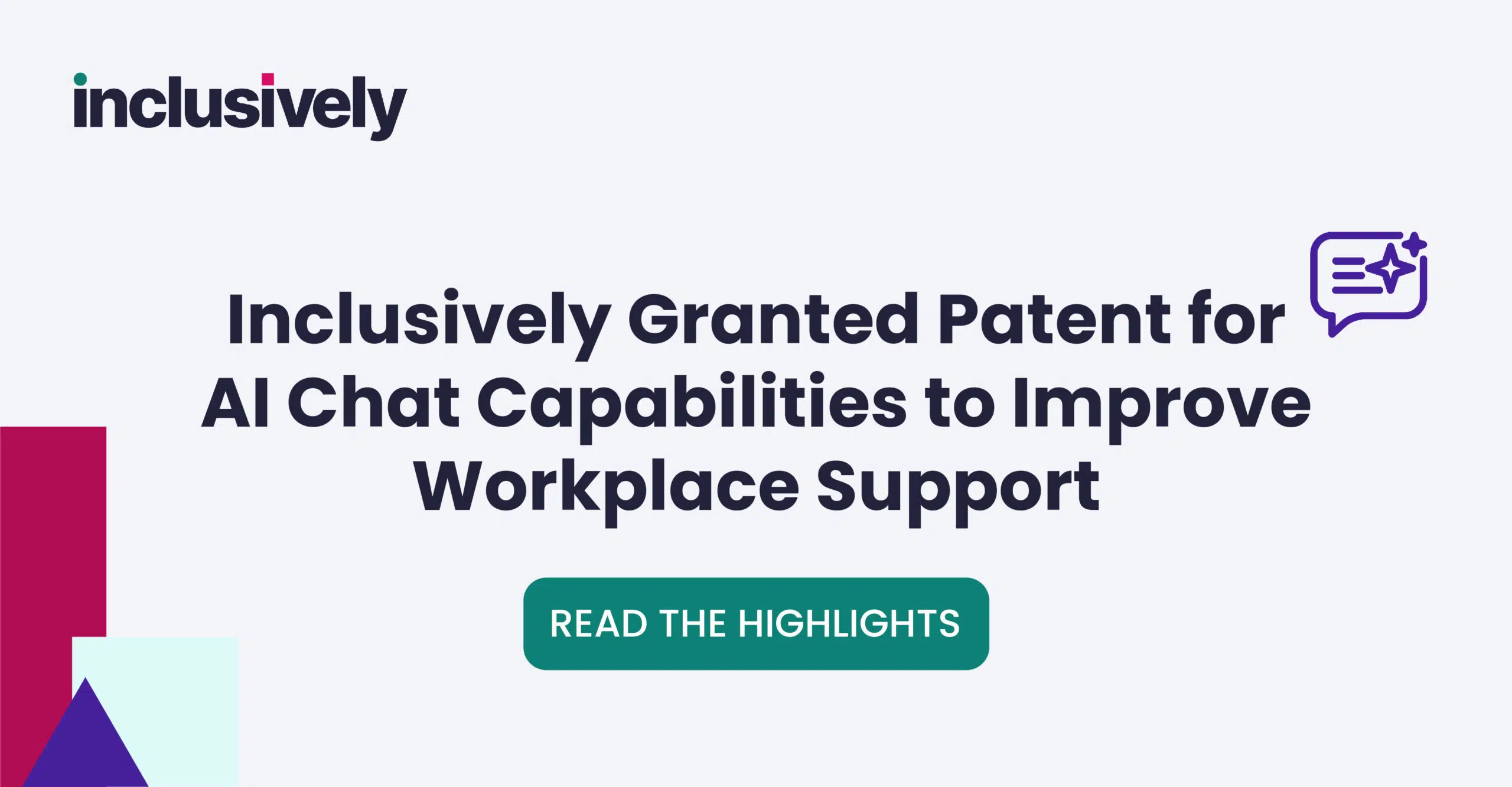You may have come across the term “non-apparent disability” or “invisible disability” in the last few years as neurodivergent disabilities like attention deficit hyperactivity disorder (ADHD), autism and dyslexia have become more well-known, and as mental health issues have become a regular headline in the context of the global pandemic. The definition of “disability” by the Americans with Disabilities Act (ADA) is a physical or mental impairment that substantially limits one or more major life activities, a person who has a history or record of such an impairment or a person who is perceived by others as having such an impairment. The definition covers an incredibly broad array of conditions, and yet many people, when they hear the term “disability”, may immediately think of an apparent disability (a physical disability that requires a service animal or a wheelchair, for example), perhaps not considering that the majority of disabilities are non-apparent.
Employees with apparent disabilities have, out of necessity, grown accustomed to engaging in conversations around accommodations and accessibility. A wheelchair user will need to ensure that they have accessible parking and an accessible building, for example. Those living with a non-apparent disability may have less experience and a lower comfort level asking for accommodations for themselves since they may not be knowledgeable about the types of accommodations that they are legally entitled to. While HR organizations may have more experience working with employees who have apparent disabilities, a recent report on workplace disability inclusion revealed that 50 percent of HR professionals have never participated in disability inclusion training, which would make the conversation about non-apparent disabilities more challenging for all parties involved. In this article, we’ll explain some of the non-apparent disabilities that are slowly gaining visibility among HR organizations and workplace disability resource groups.
The neurodivergent population
The term neurodivergent refers to a wide range of neurological conditions including autism, dyslexia, ADHD, dysgraphia, dyspraxia, Tourette syndrome, and Down syndrome. Of the entire global population, roughly 10-20% is considered neurodivergent.
Many people who are neurodivergent think differently and approach situations and challenges differently than people without disabilities. While the differences in brain structures and thinking patterns are apparent, it is not a negative trait in the workforce and many teams with neurodivergent professionals are often 30% more productive than those without them.
The neurodivergent community is one of the most underemployed populations within the disability community; in the United States, it is estimated that 85% of people on the autism spectrum are unemployed, compared to 4.2% of the overall population.
Providing helpful workplace accommodations for people who are neurodivergent should begin before they get hired. Because their thinking and communication styles are different, the typical structure of interviews and the traditional questions asked may not work for people who are neurodivergent. A truly inclusive hiring process would enable candidates to self-disclose their preferred accommodations for interviews, such as an interpreter, closed captioning, accessible parking, receiving questions in advance, extra time to respond, communication preferences, and more.
People with mental health conditions
Mental health support is something that all individuals are encouraged to seek, especially with the ongoing stresses associated with the pandemic. Before diving into this condition, it’s important to note that a person with a mental health condition requires different support and accommodations than a person who is holistically tending to their mental health. Mental health conditions can include anxiety disorders, bipolar affective disorder, depression, eating disorders, obsessive-compulsive disorder (OCD), panic disorders, post-traumatic stress disorder (PTSD), and schizophrenia.
About 18% of workers in the U.S. report having a mental health condition in any given month, making it one of the most common types of disabilities covered under the ADA. Though the ADA provides accommodations to people with mental health conditions, not all of the affected are willing to disclose their condition to their workplace; “there’s a stigma to disclosing that you have a disability,” shared Keah Brown, Journalist, Screenwriter, and Writer, in the recent panel, Work Inclusively: The Future of Disability Inclusion. “And so if you can hide it, a lot of people do. And I think what we have to do is rid ourselves of the idea that a disability is something to hide in the first place.”
Due to the rising need for mental health support during the pandemic, more awareness in the media and pop culture from shows like In Treatment and celebrities like Simone Biles sharing their own personal stories, employees are slowly becoming more comfortable disclosing mental health conditions. In a 2019 poll, 62% of Millennials said they’re comfortable discussing their mental health issues, almost twice as many as the 32% of Baby Boomers who expressed such ease.
Businesses are required to provide accommodations for employees who disclose their mental health conditions.Some of the common examples of mental health accommodations that employers can provide for employees l include a quiet working space to avoid distractions or environmental technology, like sound machines and noise canceling headphones, that block out loud noises. Another example could include implementing shorter breaks during the day to help employees who have trouble focusing for long periods of time. Accommodations vary based on the person, just as work environments and responsibilities vary per job.
Employees living with chronic health conditions
An estimated 133 million Americans have at least one chronic illness, such as hypertension, heart disease and arthritis, and by 2030, this number is expected to reach 170 million. Autoimmune diseases also fit into the category of chronic health conditions. Lupus, multiple sclerosis, ulcerative colitis, Crohn’s disease, Type 1 diabetes, Graves’ disease, Hashimoto’s thyroiditis and psoriasis often don’t produce recognizable symptoms, but this doesn’t mean that the people that have these conditions don’t require additional support or accommodations. Oftentimes, people with chronic health conditions experience long-lasting and underlying symptoms that can affect their productivity at work or ability to find and maintain employment. Symptoms include fatigue, brain fog, joint pain, swelling, unexplained weight loss, inability to concentrate, rapid heart rate, abdominal pain, poor coordination, and much more.
With the number of people with chronic health conditions growing, it’s critical that workplaces are supportive of employees willing to self-disclose their accommodation needs. However, just like disabilities are not all the same, accommodations are not either. Because these conditions affect people differently, being flexible is important. An employee living with diabetes may need more breaks to test blood sugar, take medication or eat snacks while an employee living with multiple sclerosis may need worksite accommodations that include remote work, a parking spot closer to the building entrance, or a central office and restroom location.
Providing accommodations for people with non-apparent disabilities
Like the examples mentioned above, people with non-apparent disabilities need and deserve personalized accommodations, but also have the additional challenge of overcoming systemic biases in order to be considered for roles. Improving recruiting processes, updating incentives for recruiters and hiring managers and decentralizing institutional knowledge around accommodations is important so every recruiter and hiring manager knows how to conduct an inclusive interview — and create and maintain a more inclusive culture.
For more insight on creating an inclusive workplace through accommodations, read our article: 4 Steps to Inclusion.
References:
1. SHRM, “Report: Organizations Misunderstand Value of Employees with Disabilities” 2019.
2. Robert D. Austin and Gary P. Pisano, “Neurodiversity as a competitive advantage: Why you should embrace it in your workforce.
3. Deloitte analysis; Centers for Disease Control and Prevention, “Data & statistics on Autism Spectrum Disorder”.
4. ADA, “Mental Health Conditions in the workplace and the ADA”.
5. American Psychiatric Association (APA), “About Half of Workers Are Concerned about Discussing Mental Health Issues in the Workplace; A Third Worry about Consequences if They Seek Help”.
6. American Heart Association (AHA), “Health for Life: Focus on Wellness”.



